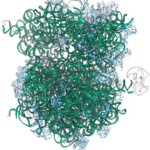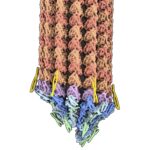About Us
The MRC Laboratory of Molecular Biology (LMB) is a research institute dedicated to the understanding of important biological processes at the levels of atoms, molecules, cells and organisms. In doing so, we provide knowledge needed to solve key problems in human health.
Our scientists tackle fundamental, often difficult and long-term research problems. The LMB has made revolutionary contributions to science, such as pioneering X-ray crystallography and electron cryo-microscopy (cryo-EM) to determine protein structures, the sequencing of DNA and the development of monoclonal antibodies. Twelve Nobel Prizes have been awarded for work carried out by LMB scientists.
The LMB also promotes the application and exploitation of our research findings, both by collaboration with existing companies and the founding of new ones, helping to advance medical research and the translation and application of knowledge.
The LMB provides an unsurpassed environment for both young and established researchers, with state-of-the-art facilities and a unique scientific culture. The LMB has always been very diverse, with a truly international outlook. We currently employ men and women from over 50 countries, and LMB alumni work in research organisations across the world.
Insight on Research
ModelAngelo software expands cryo-EM toolkit with faster atomic model building and identification of novel proteins

Kiarash Jamali, a Ph.D. student in Sjors Scheres’ group in the LMB’s Structural Studies Division, has designed a new machine learning software capable of fast, accurate model building at atomic levels and identification of new proteins beyond previous capabilities.
Structure of γ-Tubulin Ring Complex provides insights into nucleation process behind microtubule formation

David Barford’s group, in the LMB’s Structural Studies Division, in collaboration with John Kilmartin in the LMB’s Cell Biology Division, have used electron cryo-tomography and sub-tomogram averaging to determine the structure of native γTuRC capping microtubules from extracted Spindle Pole Bodies.
Quick Links
Latest News
 Emmanuel Derivery awarded the 2024 Hooke Medal
Emmanuel Derivery awarded the 2024 Hooke MedalEmmanuel Derivery, Group Leader in the LMB’s Cell Biology Division, is the 2024 recipient of the British Society for Cell Biology’s Hooke Medal. […]
 Circadian rhythms, fireflies, and tuberculosis research; the LMB at the Cambridge Festival 2024
Circadian rhythms, fireflies, and tuberculosis research; the LMB at the Cambridge Festival 2024LMB scientists showcased their research to hundreds at the Cambridge Festival, with a hands-on activity and an art piece about body clocks and a talk about tuberculosis. […]
Latest Publications
- Sm-like protein Rof inhibits transcription termination factor ρ by binding site obstruction and conformational insulation.
Said, N., et al.
Nat Commun 15(1): 3186. (15th April 2024) - Cryo-EM structure of bacterial nitrilase reveals insight into oligomerization, substrate recognition, and catalysis.
Aguirre-Sampieri, S., Casañal, A., Emsley, P., Garza-Ramos, G.
J Struct Biol : 108093 [Epub ahead of print]. (12th April 2024) - Structure of the native γ-tubulin ring complex capping spindle microtubules.
Dendooven, T., et al.
Nat Struct Mol Biol [Epub ahead of print]. (12th April 2024) - Neuron-Astrocyte Interactions and Circadian Timekeeping in Mammals.
Smyllie, NJ., Hastings, MH., Patton, AP.
Neuroscientist : 10738584241245307 [Epub ahead of print]. (11th April 2024) - Expedient production of site specifically nucleobase-labelled or hypermodified RNA with engineered thermophilic DNA polymerases.
Brunderová, M., et al.
Nat Commun 15(1): 3054. (9th April 2024) - Author Correction: Macromolecular condensation buffers intracellular water potential.
Watson, JL., et al.
Nature [Epub ahead of print]. (8th April 2024) - Concerted transformation of a hyper-paused transcription complex and its reinforcing protein.
Zuber, PK., et al.
Nat Commun 15(1): 3040. (8th April 2024)
See more Publications





